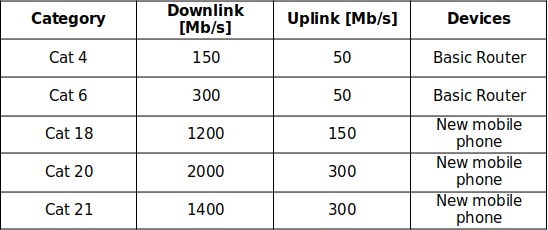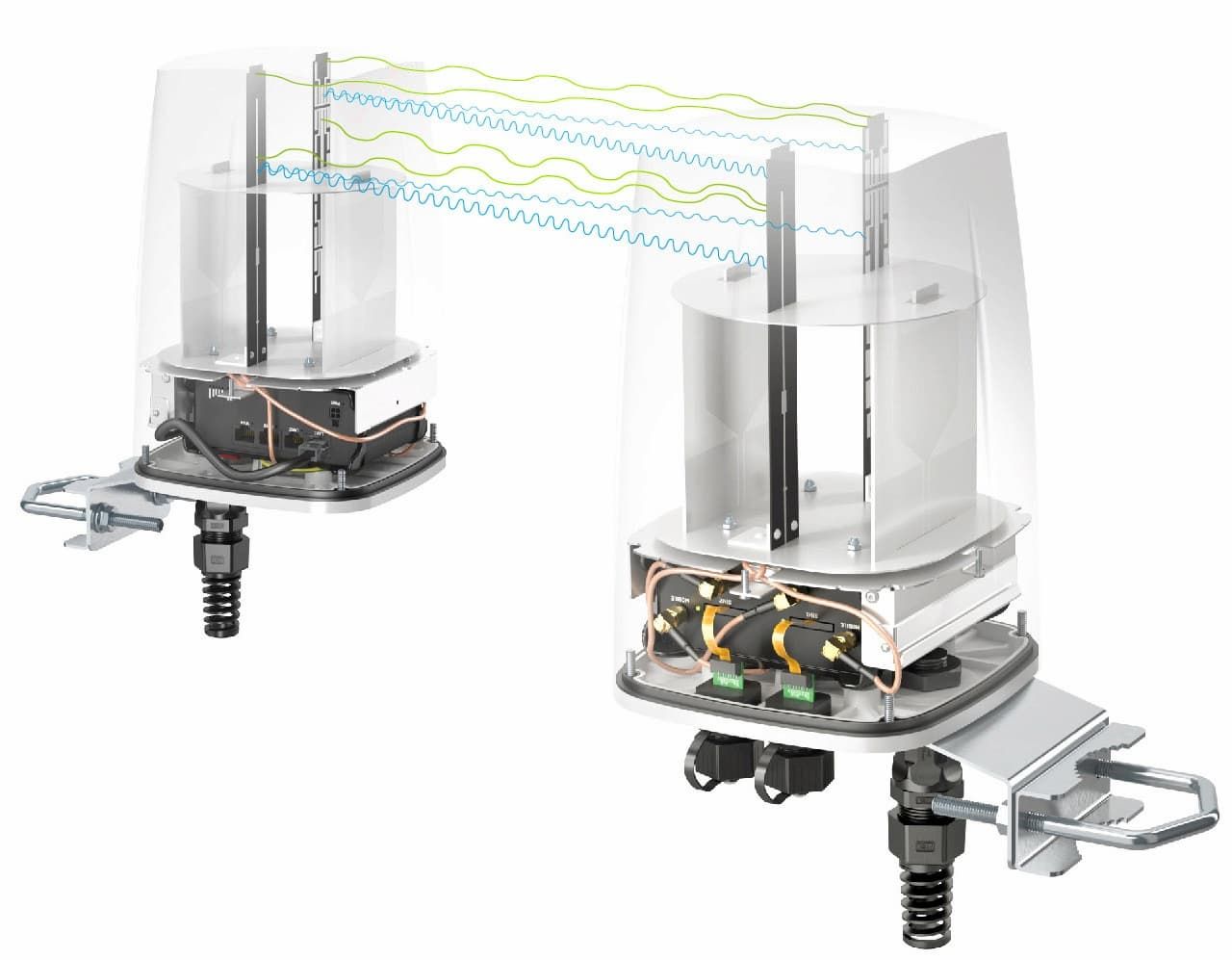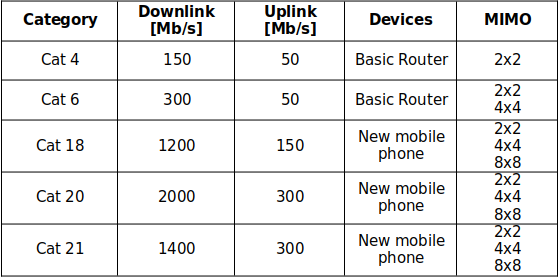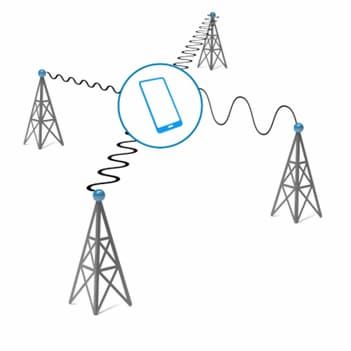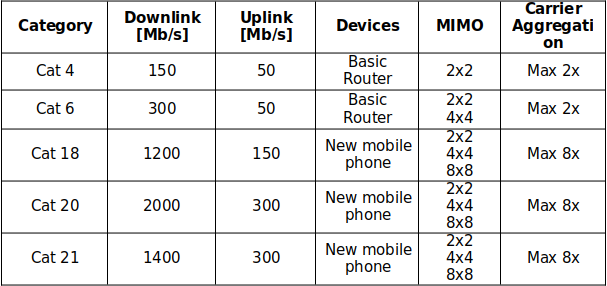Why internet from my router with external antenna is slower than internet from my mobile phone?
23.01.2024
Why internet from my router with external antenna is slower than internet from my mobile phone?
If you have encountered a problem in which your router with external antenna performs worse than your mobile phone, you may be in the right place to find an answer to question „Why does this happen?”. If you have set up your router correctly, connected the antenna with matching parameters and, in case of having directional antenna, you pointed it at the right direction, then there is one simple conclusion: Your mobile phone uses more advanced technology than your router.
LTE UE (User Equipement) Category
LTE UE Category helps to categorise LTE based devices on its uplink and downlink throughputs. That is how users can know how good a performance of a product can be. Here we can point out some LTE UE categories with uplink and downlink ranges of interest:
As we can clearly see new mobile phones use higher categories. That means they work with higher downlinks and uplinks speeds compared to everyday use router.
We can, in addition, represent the amount of MIMO layers and number of aggregated carriers that devices in each category use.
MIMO (Multiple Input Multiple Output)
MIMO is a wireless technology that transfers more data at the same time using multiple transmitters and receivers. Any wireless device with 802.11n standard supports the usage of MIMO. So if you have 2 antennas at the transmitter and 2 antennas at the receiver (called 2x2 MIMO) you are maximizing the use of MIMO technology.
However, having 2 antennas at the transmitter and 1 antenna on the receiver, you can still receive the signal, but you are not using the full capacity of the connection. We can extend our table of categories, adding an amount of maximum MIMO layers that devices in each category can use.
When it comes to this wireless technology, new mobile phones benefit more as they can take advantage of more MIMO layers.
Carrier Aggregation (CA)
Carrier Aggregation is an extending bandwidth technique. It combines component carriers of multiple frequencies to intensify the bandwidth. That means we can receive signals with various bandwidths from different stations and „combine” them into one bigger bandwidth. We can, once again, add another column to our table, presenting an amount of maximum component carriers which can be aggregated in each category.
Once more, mobile phones use higher LTE UE categories. Newer mobile phones can aggregate more component carriers than basic routers (which do not have as advanced hardware as phones), what results in widening frequency bands much more than routers can.
Conclusion
Now let’s sum everything up and add some comments. Here are the reasons why your router may be less efficient than your mobile according to LTE UE categories:
- Downlinks and uplinks are much higher in new mobile phones
- Mobile phones can aggregate more components
- Routers use lower MIMO layers
There are many reasons why this could happen, but we consider only the LTE UE Category case because we believe that every other action has been performed correctly (e.g. pointing directional antenna in the right direction, connecting all the cables properly, protecting connectors from water or cables from being damaged).
Nowadays, mobile phones have more advanced technology compared to routers that we use everyday at home. Even routers that are manufactured today can have worse specs and features than mobile phones produced a year ago. Of course, there are routers that can be more effective than mobile phones, but those are not intended for basic use.
It might be a good habit to check the LTE UE category of router before buying one. It may be very useful to see the capabilities of the router. Comparing LTE cat 4 router to LTE cat 20 mobile phone might be pointless.
